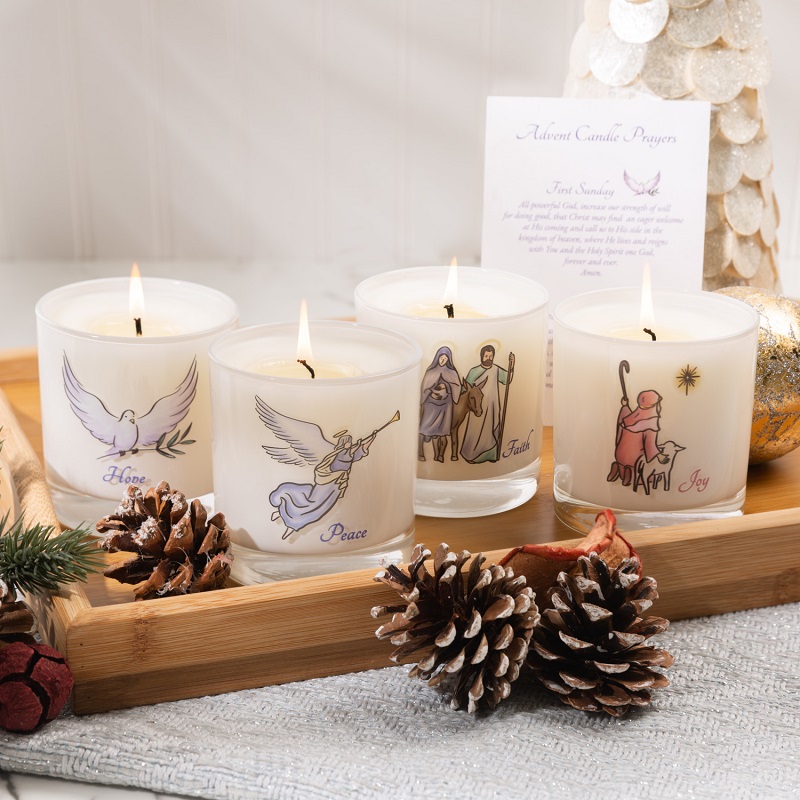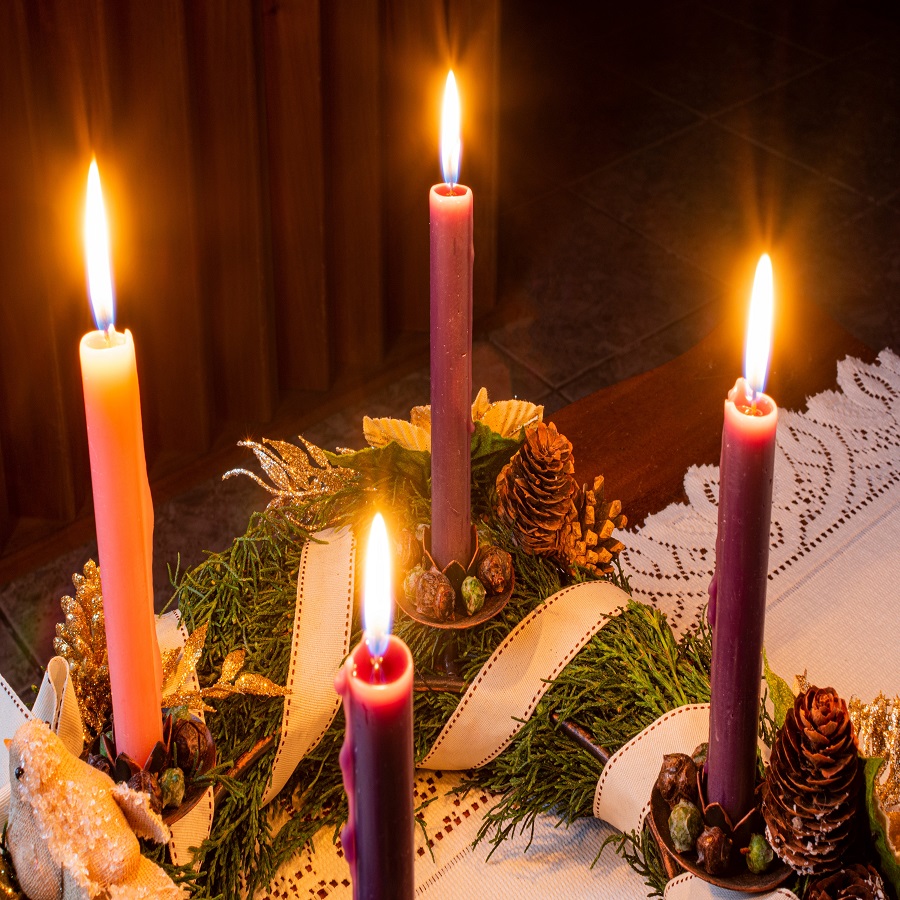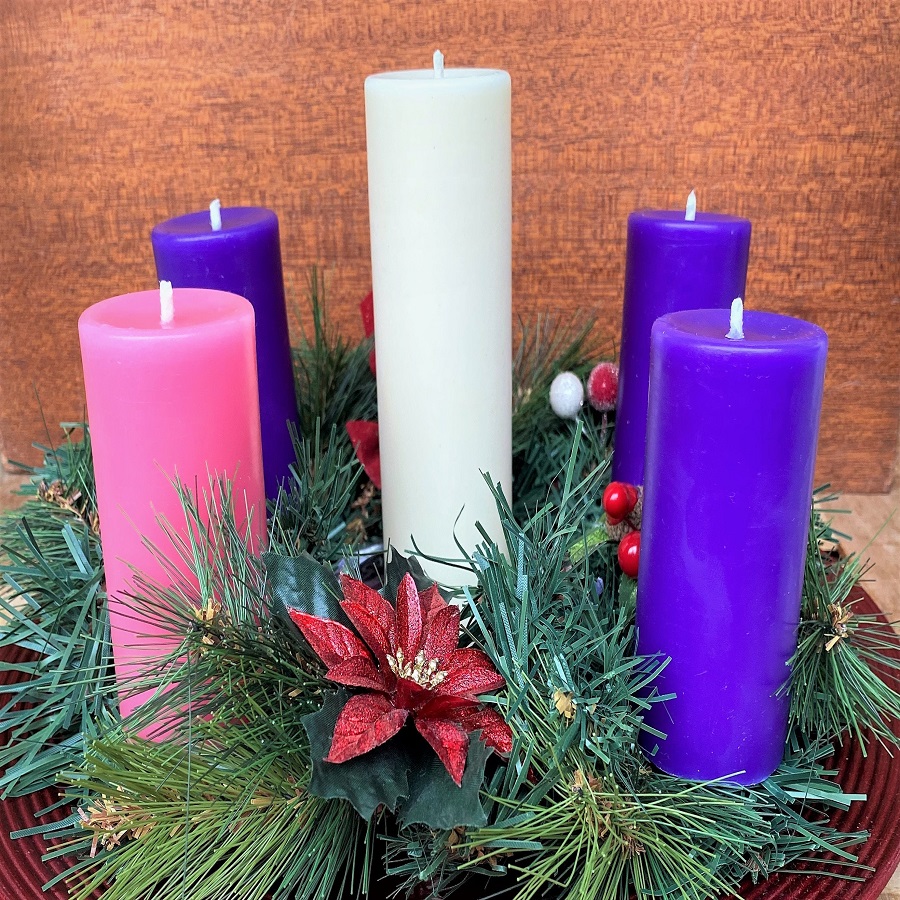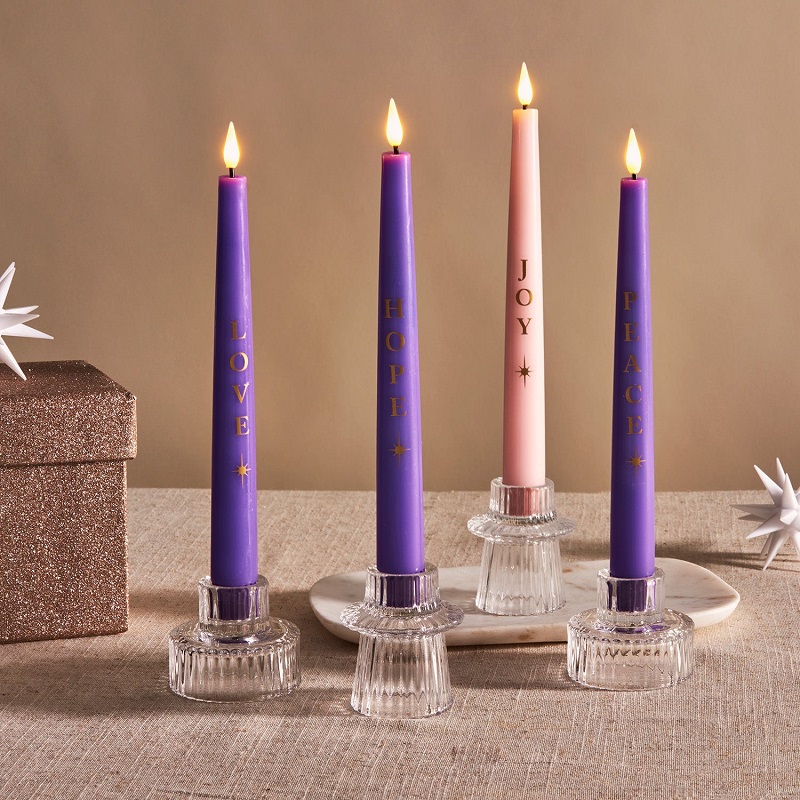Advent candles play a central role in the celebration of Advent, a season observed by many Christian denominations leading up to Christmas. This period of preparation and reflection is marked by the lighting of candles on an Advent wreath, each symbolizing different aspects of the Christian faith and the anticipation of Christ’s birth. In this article, we will explore the meaning behind Advent candles, their historical origins, and the traditions associated with their use.
Historical Origins of Advent Candles
The Emergence of Advent
The tradition of Advent began in the early Christian church as a time of preparation and penance before the celebration of Christmas. Advent, derived from the Latin word “adventus,” meaning “coming,” marks the anticipation of the arrival of Christ. Originally, the season was a time of fasting and prayer, reflecting the somber mood of waiting for Christ’s coming into the world. The practice of lighting candles to mark the days of Advent emerged as a way to visually and spiritually prepare for the celebration of Christmas.
Introduction of the Advent Wreath
The Advent wreath, which holds the Advent candles, is believed to have originated in 16th-century Germany. The circular shape of the wreath, with its evergreens, symbolizes the eternal nature of God’s love and the promise of eternal life. Early wreaths were made from simple materials like twigs and candles, and they were used as a way to count down the days to Christmas. Over time, the tradition spread to other parts of Europe and eventually to Christian communities around the world. The practice has evolved but remains rooted in its original intent to prepare the faithful for the joyous celebration of Christ’s birth.

Symbolism of the Four Advent Candles
The Candle of Hope
The first candle on the Advent wreath is traditionally purple and is known as the Candle of Hope. This candle represents the hope and expectation of the coming Messiah. It is sometimes referred to as the Prophecy Candle, symbolizing the prophecies made by the Old Testament prophets about the coming of Jesus Christ. Lighting this candle on the first Sunday of Advent sets the tone for the season. Focusing on the hopeful anticipation of Christ’s arrival and the promises made by God throughout history.
The Candle of Peace
The second candle, also purple, is known as the Candle of Peace. This candle signifies the peace that Christ brings to the world. It is also called the Bethlehem Candle. Representing the peace that Jesus’ birth brought to the world and the peace that believers call to bring into their own lives and communities. Lighting this candle emphasizes the theme of peace. Both the peace that comes from Christ and the call for believers to live in harmony with one another as they await His coming.
The Candle of Joy
The third candle, which is pink, is known as the Candle of Joy. This candle sometimes refer to as the Shepherd’s Candle, highlighting the joy that the shepherds experienced when they heard the announcement of Jesus’ birth. The pink color signifies a shift in the Advent season, moving from a period of penance and preparation to one of rejoicing as Christmas approaches. Lighting this candle represents the joy and celebration that come with the anticipation of Christ’s birth. Marking a moment of joy and light in the midst of the season’s reflection.
The Candle of Love
The fourth candle, which is purple, is known as the Candle of Love. This candle represents the love that God has for humanity and the love that believers call to show one another. It’s sometimes referring to as the Angel’s Candle. Symbolizing the message of love and goodwill that the angels proclaimed to the shepherds. Lighting this candle emphasizes the theme of love, both the divine love that came into the world through Jesus and the call to embody that love in our interactions with others.

The Advent Wreath and Its Significance
The Circular Shape of the Wreath
The circular shape of the Advent wreath holds significant meaning. The circle represents eternity, with no beginning or end. Symbolizing the eternal nature of God’s love and the endless hope and promise that Christ brings. This unbroken shape also signifies the continuity of life and the ongoing relationship between God and humanity. By incorporating evergreens into the wreath, it further symbolizes eternal life and the unchanging nature of God’s promises.
Placement of the Advent Wreath
Traditionally, the Advent wreath place in a prominent location within the church or home. Such as on the altar or a central table. This placement ensures that it is visible during daily prayers and reflections throughout the Advent season. The visibility of the wreath and its candles serves as a constant reminder of the season’s themes and the anticipation of Christmas. It also encourages the faithful to engage in the spiritual practices associated with Advent. Such as prayer, reflection, and preparation.
Lighting the Advent Candles
The Ritual of Lighting the Candles
The ritual of lighting the Advent candles typically involves a specific order and purpose for each candle. On the first Sunday of Advent, the Candle of Hope is lit, followed by the Candle of Peace on the second Sunday. The Candle of Joy is lit on the third Sunday. And the Candle of Love is lit on the fourth Sunday. Each candle is usually accompanied by scripture readings, prayers, and hymns that correspond to its theme. This ritual not only marks the passage of time but also reinforces the spiritual significance of each week of Advent.
The Role of Advent Devotions
In addition to the lighting of the candles, many families and congregations incorporate Advent devotions into their celebrations. These devotions may include readings from the Bible, special prayers. And reflective activities that correspond to the themes of each candle. The use of Advent calendars and daily devotional materials can enhance the spiritual experience of the season. Helping individuals and families to stay focused on the anticipation and preparation for Christ’s coming.
The Advent Candles and Modern Practices
Evolution of Traditions
While the traditional practices of lighting Advent candles and using the Advent wreath remain central to the season, modern adaptations have emerged. Some families and churches incorporate additional elements into their Advent celebrations, such as themed decorations, music, and community service projects. These modern practices aim to enrich the spiritual experience of Advent and make it more relevant to contemporary life. Despite these adaptations, the core themes of hope, peace, joy, and love continue to emphasiz.
Incorporating Advent Candles in Various Settings
The use of Advent candles has extend beyond traditional church settings and is now commonly seen in homes, schools, and community centers. Many families create their own Advent wreaths and incorporate the lighting of candles into their holiday traditions. Schools and community organizations also use Advent candles to teach about the meaning of the season and to foster a sense of community and shared anticipation. This broader use of Advent candles reflects their enduring significance and the universal themes of the season.

Conclusion
The Enduring Significance of Advent Candles
The Advent candles hold a rich history and profound symbolism that continues to resonate with believers today. From their origins in early Christian traditions to their modern adaptations, the candles serve as a powerful reminder of the themes of hope, peace, joy, and love that define the Advent season. As Christians prepare for the celebration of Christmas. The lighting of the Advent candles provides a meaningful way to reflect on the significance of Christ’s coming and to engage in spiritual preparation.
Embracing the Spirit of Advent
Understanding the meaning of Advent candles and their traditions invites believers to embrace the spirit of Advent with renewed intention and focus. By participating in the lighting of the candles and reflecting on their symbolic meanings. Individuals and communities can deepen their spiritual journey and enhance their celebration of Christmas. The Advent season, marked by the light of the candles. Ultimately, points to the profound joy and hope that the birth of Jesus brings to the world.

